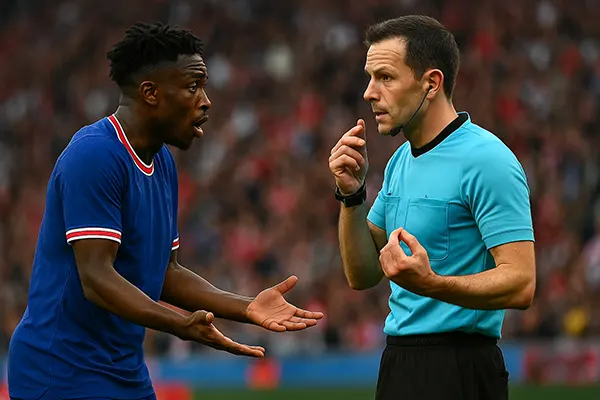In 2025, the use of Video Assistant Referee (VAR) in football has undergone significant updates. These changes are not just technical upgrades but also reflect a wider shift in how technology integrates with the decision-making processes of referees. With increasing pressure on officials to deliver error-free matches, the new VAR rules are designed to make interventions faster, more transparent, and more accurate.
Faster Decision-Making and Transparency
One of the most important updates in 2025 is the reduction in VAR review time. According to the International Football Association Board (IFAB), an average decision must now be completed within 40 seconds. This aims to reduce match interruptions and criticism of long pauses that affect the game flow.
To improve transparency, stadium screens now display VAR communication live, showing the audience what referees are analysing. This has been welcomed by fans and commentators alike, as it builds trust and helps reduce controversies surrounding decisions.
Additionally, referees are now required to announce the final decision and reasoning through stadium microphones, similar to how it is done in American football. This public explanation increases accountability and helps educate audiences on how the rules are being applied.
Role of AI in VAR Decisions
Artificial intelligence now plays a more active role in suggesting offside lines and identifying potential fouls. Semi-automated offside technology, already tested in previous tournaments, is now standard in top leagues worldwide. The system uses multiple high-speed cameras and machine learning to map player positions in real-time.
This reduces the need for manual frame selection by VAR officials, cutting average review times by over 30%. The accuracy rate of offside decisions in 2025 stands at over 99%, according to data from UEFA and FIFA technical reports.
However, AI does not override human judgment. Final calls still belong to the on-field referee, ensuring that interpretation of intent and context remains a human responsibility. This hybrid approach balances technological precision with the referee’s understanding of the match situation.
Expanded Use Cases and Clarified Protocols
VAR is no longer limited to four categories (goal, penalty, red card, mistaken identity). In 2025, IFAB introduced the concept of “contextual review” which allows VAR to assist in yellow card accumulation cases and simulation incidents. This expansion is in response to demands for better regulation of gamesmanship and tactical fouls.
The protocols have also been tightened to prevent over-reliance on VAR. Referees must watch the incident in real time before consulting the screen, except in clear-and-obvious situations. This step reinforces referee autonomy and discourages passive officiating.
Furthermore, the number of allowed VAR checks per match is now capped in certain leagues to encourage consistency and prevent abuse of the system. This rule is especially enforced in youth and second-tier competitions to maintain game rhythm and reduce delays.
Impact on Players and Coaches
Players now receive detailed briefings before each season on how VAR operates under the new rules. The aim is to prevent unnecessary protests and help teams adapt their strategies, especially in defensive formations and pressing tactics where fouls often occur unnoticed.
Coaches have responded positively to the clarified VAR limits, with many appreciating the faster verdicts and standardised application. Tactical timeouts previously caused by VAR delays are now largely eliminated, ensuring fairer game dynamics.
Some players argue that the presence of AI has made offside calls “too clinical,” removing the benefit of the doubt. But governing bodies counter that precision is necessary to maintain fairness across all levels of the sport.

Technological Infrastructure and Investments
Significant investments have been made in 2025 to upgrade stadium infrastructure for better VAR implementation. High-frame-rate cameras and real-time tracking software are now required in all top-tier competitions, supported by national federations and league budgets.
In addition to hardware, VAR control rooms have been expanded and now feature multi-angle synchronisation software, allowing officials to review incidents from over 12 angles simultaneously. These tools provide a broader context, especially in complex penalty or handball situations.
The training of VAR officials has also been overhauled. Referees must now undergo mandatory certification every season, including simulated decision-making exercises, to ensure consistency and technological competence.
Global Standardisation and Next Steps
The 2025 changes aim to unify VAR standards globally. FIFA has mandated that all member federations adopt the revised protocols by 2026 World Cup qualifiers. This move addresses long-standing concerns over unequal application of VAR across regions.
There are also plans to extend AI-based foul detection into grassroots football by 2028, using affordable sensor kits and crowd-sourced video feeds. These innovations could democratise access to refereeing assistance beyond elite competitions.
Going forward, the debate continues on how much control technology should have in football. But one thing is clear — the 2025 reforms mark a decisive step toward making VAR faster, smarter, and more transparent for everyone involved in the game.
